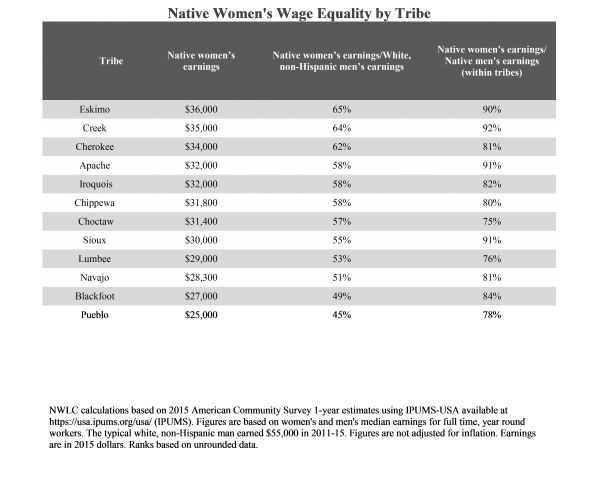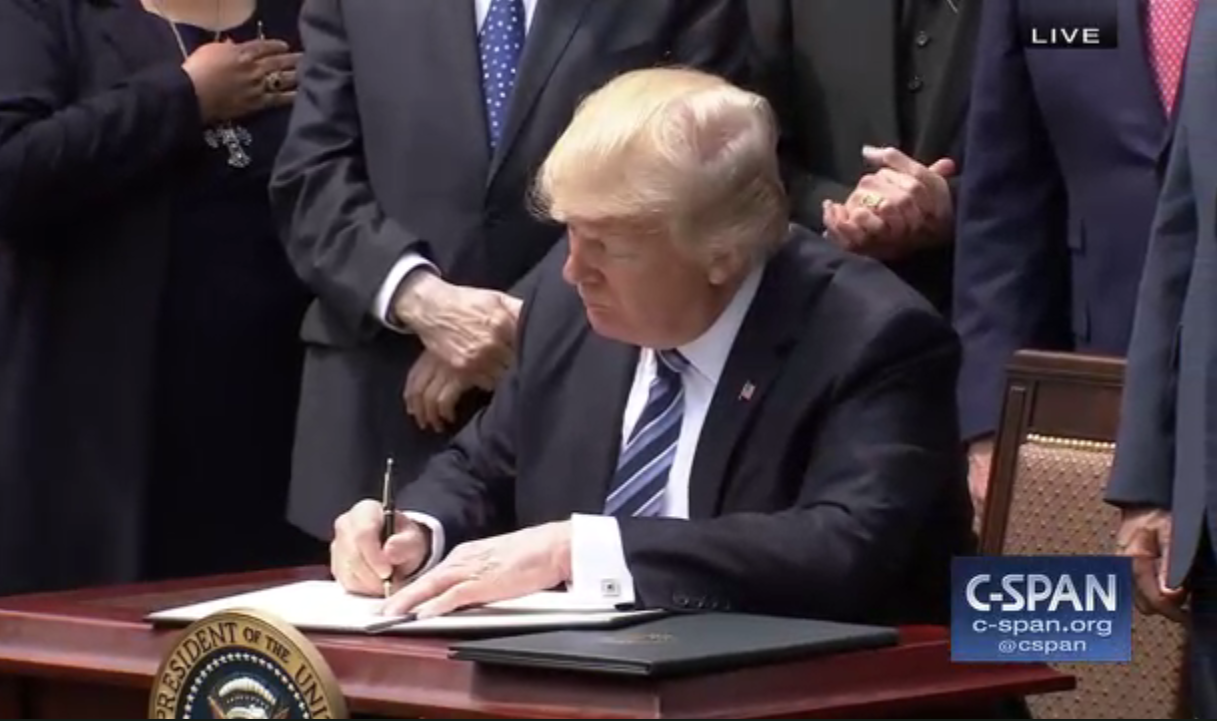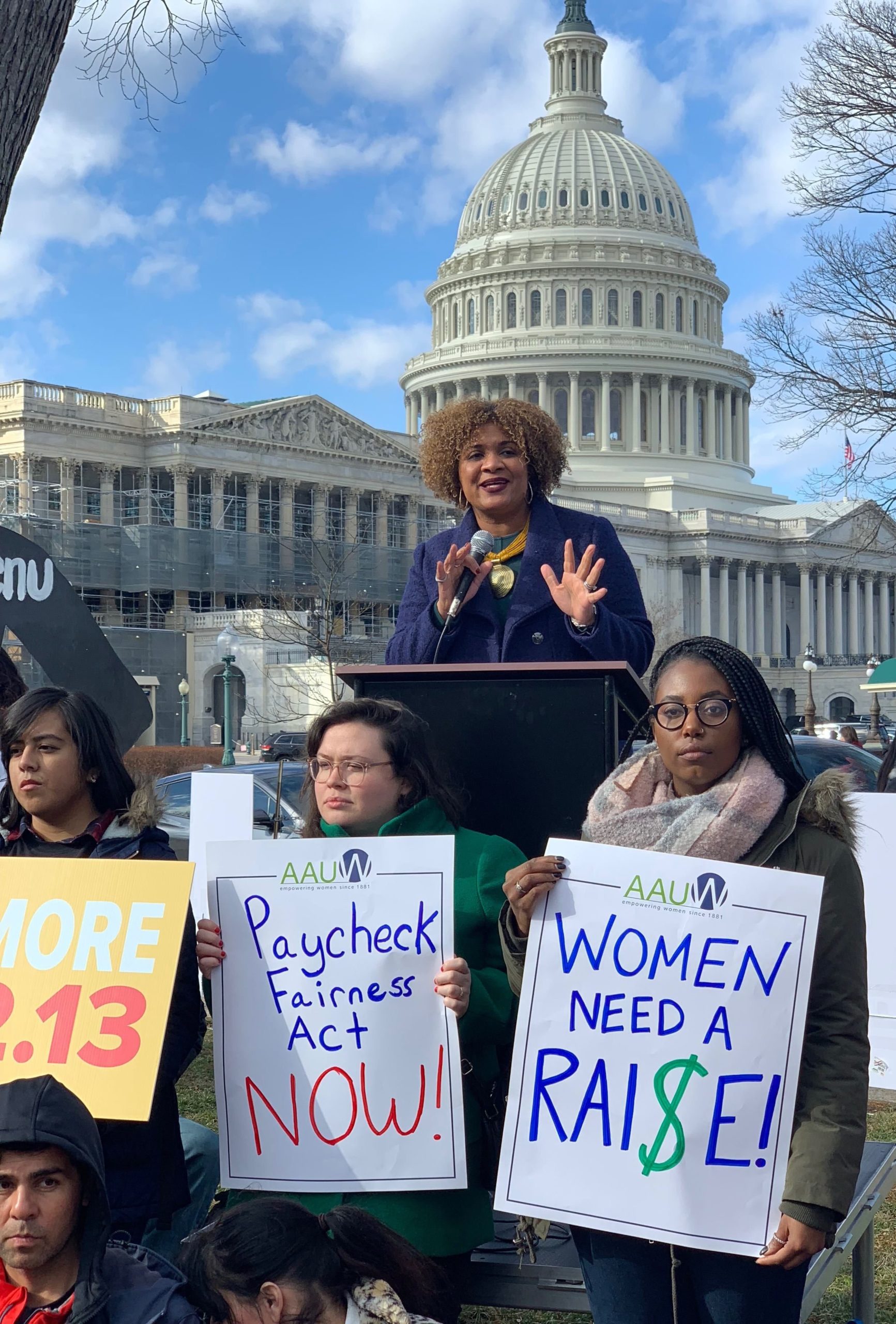It’s Almost 2018 and Native Women Still Don’t Have Equal Pay

We’re only three months away from 2018, and while most of us are ready to bid 2017 goodbye as fast as possible (I know I am!), many women of color are still waiting for their equal pay from 2016. Today we observe Native women’s equal pay day, the day to which Native women have to work to finally catch up to what white, non-Hispanic men made last year. Yes, you read that right – it’s taken more than 21 months for Native women to make what white, non-Hispanic men make in 12.
Most people know that women overall typically make less than men overall do – 80 cents for every dollar a man makes, according to the latest data released two weeks ago. However, millions of women of color aren’t making anywhere near those 80 cents when you compare them with white, non-Hispanic men. For every dollar made by their white, non-Hispanic male counterparts in 2016, Native women typically made only 57 cents, Black women 63 cents, and Latina women 54 cents.
Native women experience a substantial wage gap regardless of tribe, age, education, or occupation. That Native women make only 57 cents for every dollar a white man makes is abysmal, but for women in some tribes the disparity is even greater. Pueblo and Blackfoot women make less than half of what white, non-Hispanic men make. And while the wage gap between Native men and women is smaller than that of Native women compared to white men (because the wage gap hurts men of color, too), Native women still make up to 25% less than men in their own tribe.

Like all women of color, the wage gap for Native women begins right when they enter the workforce: Native women ages 15-24 make 76 percent of what white, non-Hispanic men their age make. Even in occupations where they’re overrepresented – which are likely to be low-wage positions like cashiers, retail sales, and childcare workers – Native women are making significantly less than their male counterparts. Perhaps most concerning, pursuing higher education only widens the wage gap for Native women rather than closing it. The average Native woman with a professional or doctoral degree is paid only $66,000 per year, which is less than white, non-Hispanic men with a Bachelor’s degree ($72,000 per year). By the time they reach retirement, Native women are earning less in Social Security benefits, have saved less to spend on retirement and health care, and can’t invest as much in the future of their families.
Native women deserve a raise, and closing the wage gap would have a major impact. We’re talking about a serious chunk of change here – for a wage gap that amounts to a loss of $24,007 per year, the typical Native woman loses $960,280 by the time she retires. For the two out of three Native women who are the primary breadwinners for their families, an extra $24,007 a year could be life changing for communities that suffer high rates of poverty, educational inequity, and environmental injustice.
The fact that we even have to observe a Native women’s equal pay day should make you angry. And rather than tackling pay discrimination and the wage gap, the Trump Administration has been rolling back or blocking common sense initiatives to address the issue, like the EEO-1 equal pay data collection, which would have required large employers to collect and confidentially submit to the EEOC pay data by race, gender, and occupational category. We’re fighting to hold the Administration accountable for its egregious decision to stop this initiative, which would help shine a light on gender and racial wage gaps, including in industries where Native women face the steepest wage gaps.
Let’s turn that anger into action. Here are some steps we can take to remedy the wage gap right now:
- Raise awareness. Didn’t know that Native women face a much steeper wage gap than women overall in America? Most people don’t either. Join our Twitterstorm on from 2-3pm ET on Monday, September 25 and use the hashtags #NativeWomenEqualPay, #IndigenousWomenEqualPay, and #IndigenousWomen to spread the word and stand in solidarity with Native women’s fight for equal pay.
- Support the (many) legislative solutions that can help close the wage gap. Legislative fixes like strengthening our equal pay laws so that women can fight back against pay discrimination, raising the minimum wage so women in low-wage jobs can support themselves and their families, and increasing the availability of high-quality, affordable child care will help women achieve the pay equity they deserve.




